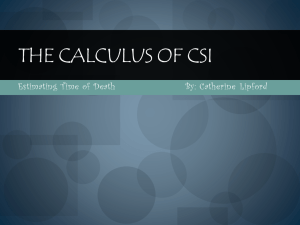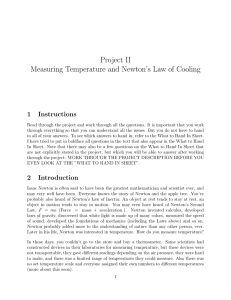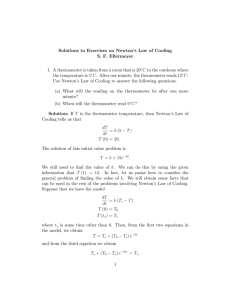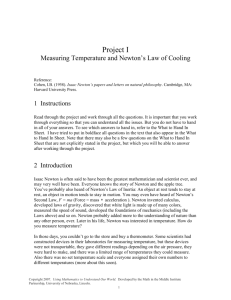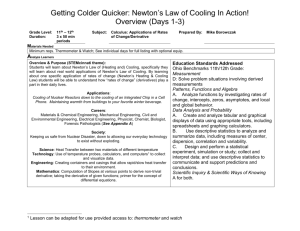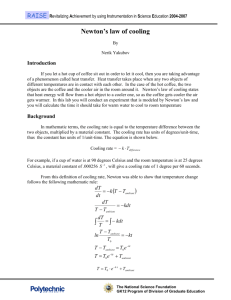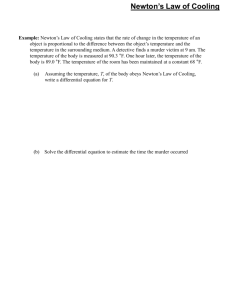Measuring Temperature and Newton`s Law of Cooling
advertisement
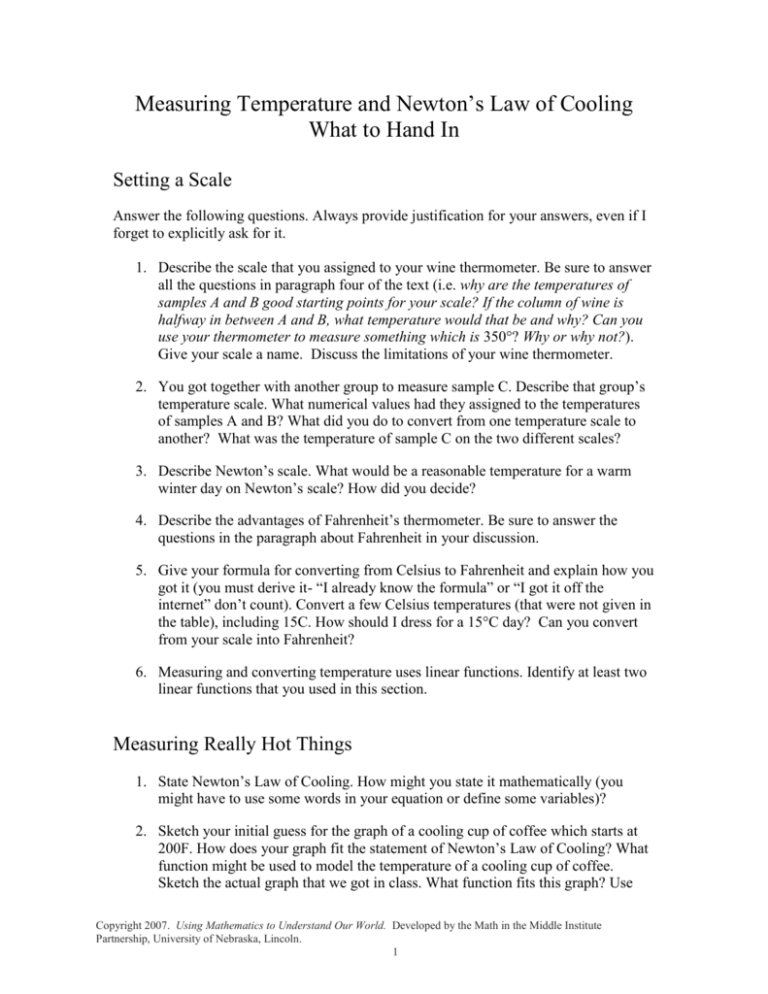
Measuring Temperature and Newton’s Law of Cooling What to Hand In Setting a Scale Answer the following questions. Always provide justification for your answers, even if I forget to explicitly ask for it. 1. Describe the scale that you assigned to your wine thermometer. Be sure to answer all the questions in paragraph four of the text (i.e. why are the temperatures of samples A and B good starting points for your scale? If the column of wine is halfway in between A and B, what temperature would that be and why? Can you use your thermometer to measure something which is 350°? Why or why not?). Give your scale a name. Discuss the limitations of your wine thermometer. 2. You got together with another group to measure sample C. Describe that group’s temperature scale. What numerical values had they assigned to the temperatures of samples A and B? What did you do to convert from one temperature scale to another? What was the temperature of sample C on the two different scales? 3. Describe Newton’s scale. What would be a reasonable temperature for a warm winter day on Newton’s scale? How did you decide? 4. Describe the advantages of Fahrenheit’s thermometer. Be sure to answer the questions in the paragraph about Fahrenheit in your discussion. 5. Give your formula for converting from Celsius to Fahrenheit and explain how you got it (you must derive it- “I already know the formula” or “I got it off the internet” don’t count). Convert a few Celsius temperatures (that were not given in the table), including 15C. How should I dress for a 15°C day? Can you convert from your scale into Fahrenheit? 6. Measuring and converting temperature uses linear functions. Identify at least two linear functions that you used in this section. Measuring Really Hot Things 1. State Newton’s Law of Cooling. How might you state it mathematically (you might have to use some words in your equation or define some variables)? 2. Sketch your initial guess for the graph of a cooling cup of coffee which starts at 200F. How does your graph fit the statement of Newton’s Law of Cooling? What function might be used to model the temperature of a cooling cup of coffee. Sketch the actual graph that we got in class. What function fits this graph? Use Copyright 2007. Using Mathematics to Understand Our World. Developed by the Math in the Middle Institute Partnership, University of Nebraska, Lincoln. 1 this to figure out when a cup of coffee that is initially at 200F is cool enough to drink (notice that we have used many different starting temperatures for the coffee problem, but that’s ok because only one number in the formula changes when we change the starting temperature- which number is that?). 3. Give a function which describes the cooling of any hot object in a cooler room. Use this to solve the hot chocolate problem. 4. Give a function which describes the warming of any cool object in a warmer room. How is this function similar to or different from the formula for cooling objects? Explain. Answer the questions in the project sheet about how long it takes for the milk to warm up. Pound Cake Complications 1. Do you think Newton’s Law of Cooling applies to pound cake? Discuss the limitations. 2. Identify some real-life situations in which it might be important to predict the temperature of a cooling or warming object. Note that here we are thinking about predicting using current information, not, for example, continually testing the object to see what its temperature is. Be sure to use complete sentences. Who Killed John Boddy? 1. Discuss factors that might effect the cooling of a dead body. If you used Newton’s law, at about what time would John Boddy have died? What do you think about Colonel Mustard’s accusation? What does this have to do with pound cake? Copyright 2007. Using Mathematics to Understand Our World. Developed by the Math in the Middle Institute Partnership, University of Nebraska, Lincoln. 2

